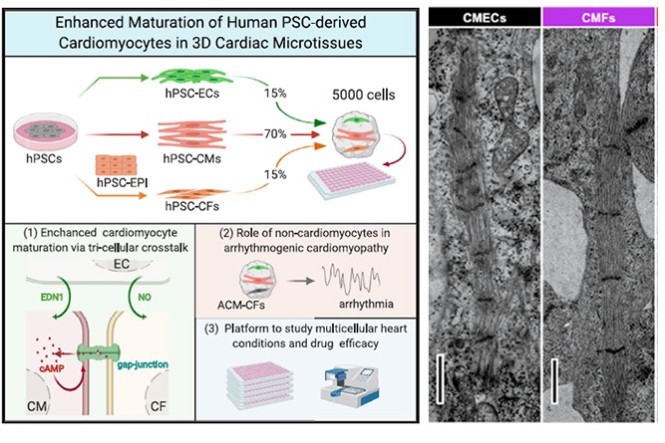It isn’t easy to grow adult beating heart muscle cells (mini hearts) in culture. In the Department of Anatomy (in the group of Milena Bellin and Christine Mummery) , the PhD student Elisa Giacomelli investigated which differentiation protocol could best be used to this end. It turned out that cardiac muscle cells assumed the most mature 3D structure when cultured in the presence of fibroblasts and endothelial cells. During this research, a multitude of techniques were used to determine to what extent the cultured heart muscle cells really had matured. Our department contributed to this by taking large, high-resolution images of the heart muscle cells that were cultured in the presence or absence of the fibroblasts and endothelium. On the basis of the ultrastructural features such as the distance between the Z-lines and the presence of T-tubules and M-lines, this maturity could be determined.
Cell Stem Cell. 2020 Jun 4;26(6):862-879.e11. doi: 10.1016/j.stem.2020.05.004. Epub 2020 May 26
